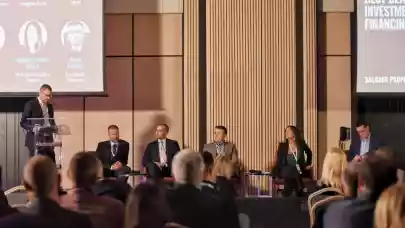
Over the past year, many residential markets in CEE that have historically depended on credit buyers, have experienced a significant slowdown. This is not the case with Serbia’s residential market which has been dominated by cash buyers. At the same time, the local commercial real estate market also remains attractive to foreign investors, especially for the development of logistics and industrial facilities. These are just some of the conclusions of last week‘s Balkans Property Forum 2023, organised in Belgrade by Property Forum.
According to expert research, 70 percent of apartments in Serbia are paid for in cash, and the price per square meter is still dictated by inflation, rising prices of building materials and a lack of labour. Currently, home prices in Serbia are stagnating, and no one can predict with certainty what they will be like in 2024. Still, good news is coming from bankers: next year they expect inflation to decrease and interest rates to follow suit
„Serbia does not depend on credit customers, as is the case with many other countries in Europe, which are currently affected by a major crisis. There are still a lot of cash buyers in Serbia, both Russians, Ukrainians and our diaspora. The demand is a little slower, but it still exists, so bankers and people from the real estate sector are optimistic for next year,“ believes Nikola Đogatović, Director, Commercial Real Estate Sector at Novaston Real Estate Platform, who expects that Serbia will maintain that balance and that there won't be a big crisis like the one that gripped the world in 2007-2008.
Real estate prices depend not only on demand, but also on inflation at the European level and real purchasing power, and currently, the prices of all types of real estate in Serbia are at their maximum. In recent years, approximately 20,000 apartments have been sold in Belgrade per year, which is relatively small, but in 2023, these sales have pretty much stopped, not only due to inflation, and high prices but also unfavourable interest rates on loans.
According to Marija Savić, Director of Economic Research at Bank Intesa, inflation reached its peak in all countries at the beginning of the year, and in Hungary, it was the highest of all EU countries at 25%. In our country, it was at its peak in April, some 16%, and now we see that it is gradually falling everywhere.
On the other hand, the central banks of developing countries, which include our region, started tightening their monetary policy much earlier, so we now see that some banks are starting to stagnate interest rates, as is the case in Serbia and Romania, while Hungary has started interest reduction.
The demand for residential loans is currently stagnant, bearing in mind that many resident loans are linked to Euribor. The good news is that the ECB is currently pausing to raise interest rates, and some predict that inflation and interest rates will fall next year. Projections are that there will be a reduction in interest rates in September and December, which will also lead to a reduction in interest rates on resident loans, said Marija Savić, pointing out that there are no delays in the repayment of existing loans.
Huge potential for logistics developments
The crisis is also not drastically affecting the construction of industrial buildings. Serbia is still very interesting to international investors because it offers the possibility of building business, logistics, and industrial facilities under favourable conditions. According to Petar Kolognat, Head of Business Development Serbia at CTP, Serbia has positioned itself as a very attractive market for investors in recent years, especially when it comes to industrial facilities.
“CTP operates in 10 European countries and in many of them it is difficult to find quality land, and in the Czech Republic, it is no longer possible to buy land. In Serbia, this is not a problem. Serbia has enough land, which is one of the reasons why we are so active in the Serbian market. New industrial zones have been developed in Belgrade and Novi Sad, currently, zones are being developed in Niš and Jagodina, and the plan is to develop new industrial parks in Novi Sad and Jagodina so that we can be competitive in offering production spaces in locations where there is enough labour,“ said Petar Kolognat, who announced the construction of 150,000 square meters of new space in the next year.



